Release Date :
Reference Number :
DAVNOR-2018-01
SPECIAL RELEASE
Housing Characteristics in Davao del Norte (Results of the 2015 Census of Population)
Occupied Housing Units of Davao del Norte reached 230,520
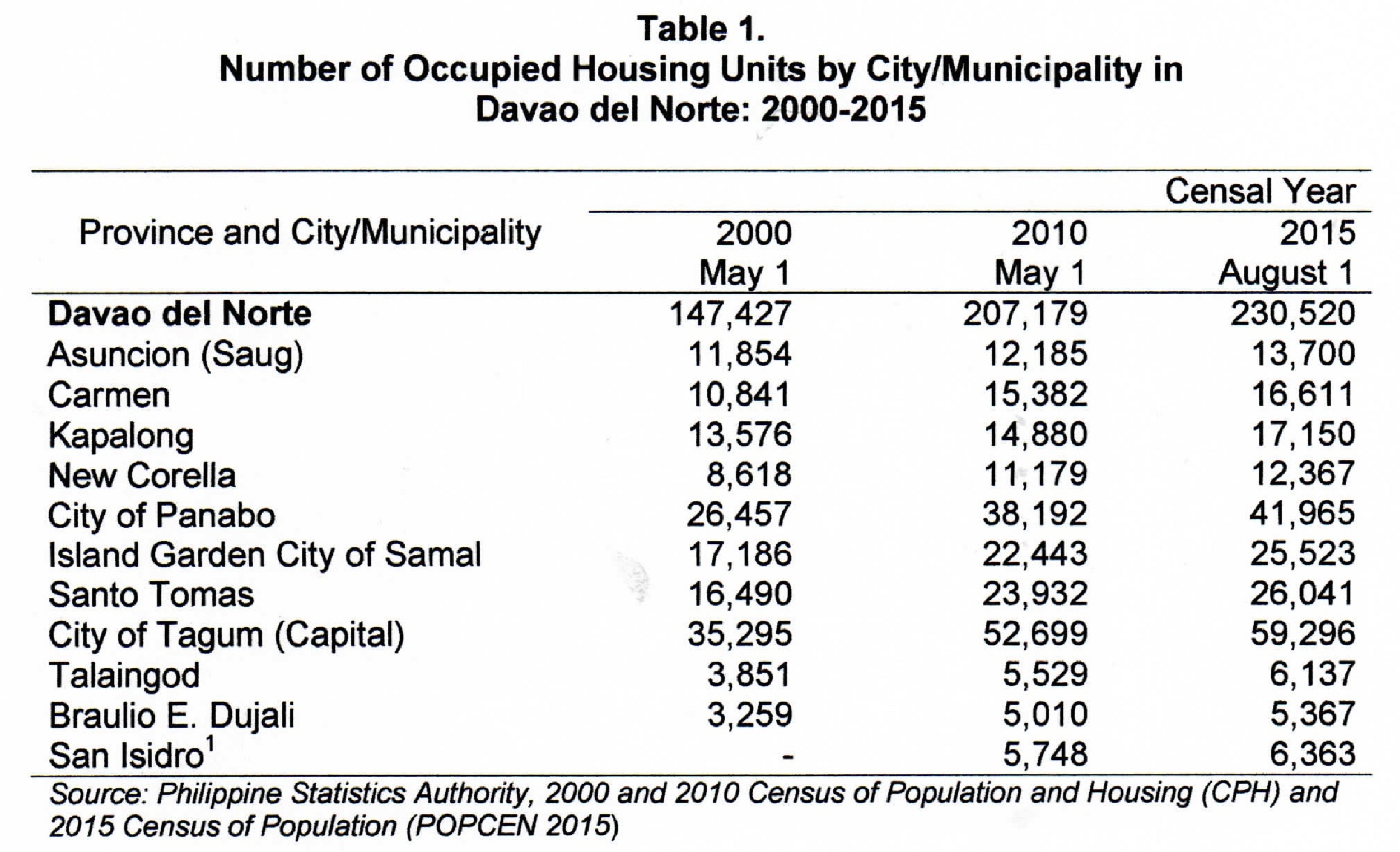 Based on the 2015 Census of Population (POPCEN 2015), the number of occupied housing units in Davao del Norte as of August 1, 2015 was 230,520. This is 23,341 higher than the 207,179 occupied housing units reported in 2010 and 83,093 more than the 147,427 occupied housing units posted in 2000.
Based on the 2015 Census of Population (POPCEN 2015), the number of occupied housing units in Davao del Norte as of August 1, 2015 was 230,520. This is 23,341 higher than the 207,179 occupied housing units reported in 2010 and 83,093 more than the 147,427 occupied housing units posted in 2000.Among the eight municipalities and three component cities in Davao del Norte, City of Tagum, the provincial capital, had the most number of occupied housing units at 59,296. This was comprised of 25.7 percent of the total number of occupied housing units in the province. It was followed by City of Panabo (41,965), and the Municipality of Santo Tomas (26,041). Municipality of Braulio E. Dujali had the least number of 5,367 occupied housing units in 2015.
There were 101 households for every 100 occupied housing units
A total of 233,232 households and 1,006,888 persons resided in 230,520 housing units in the province resulting to a ratio of 101 households for every 100 occupied housing units, and a ratio of 4.37 persons per occupied housing units. In 2010, there were 102 households per 100 occupied housing units, and 4.53 persons per occupied housing unit.
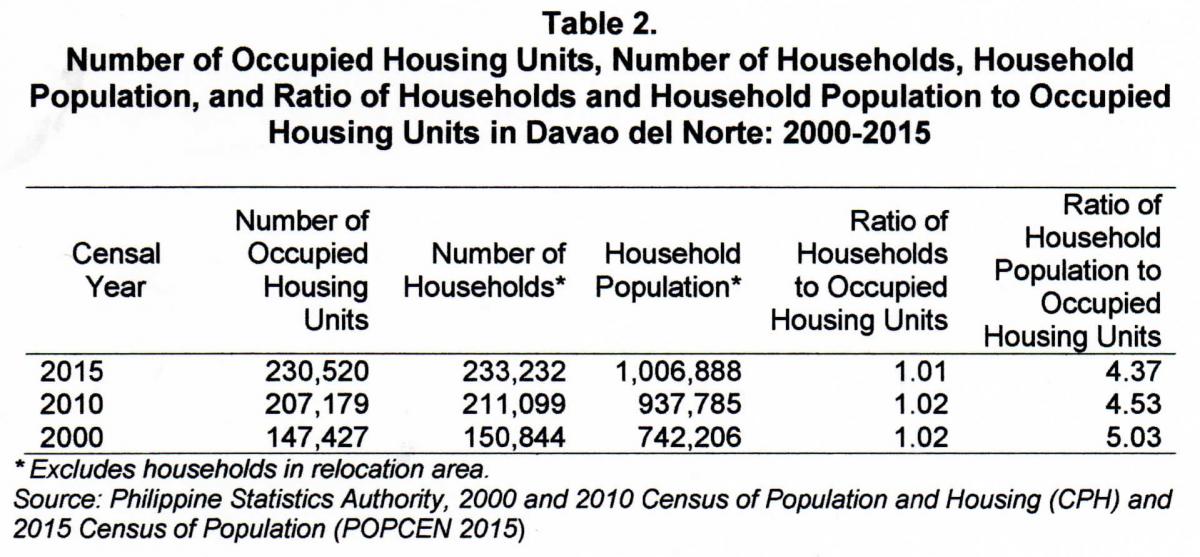
Majority were single-type houses
In 2015, single houses made up of 89.5 percent of the total occupied housing units in Davao del Norte. About 5.6 percent were of duplex type, while 4.7 percent were multi-unit residential buildings. By comparison , in 2010, single houses accounted for 93.2 percent of the total occupied housing units, 2.8 percent were duplex, and 3.3 percent were multi-unit residential buildings or houses.
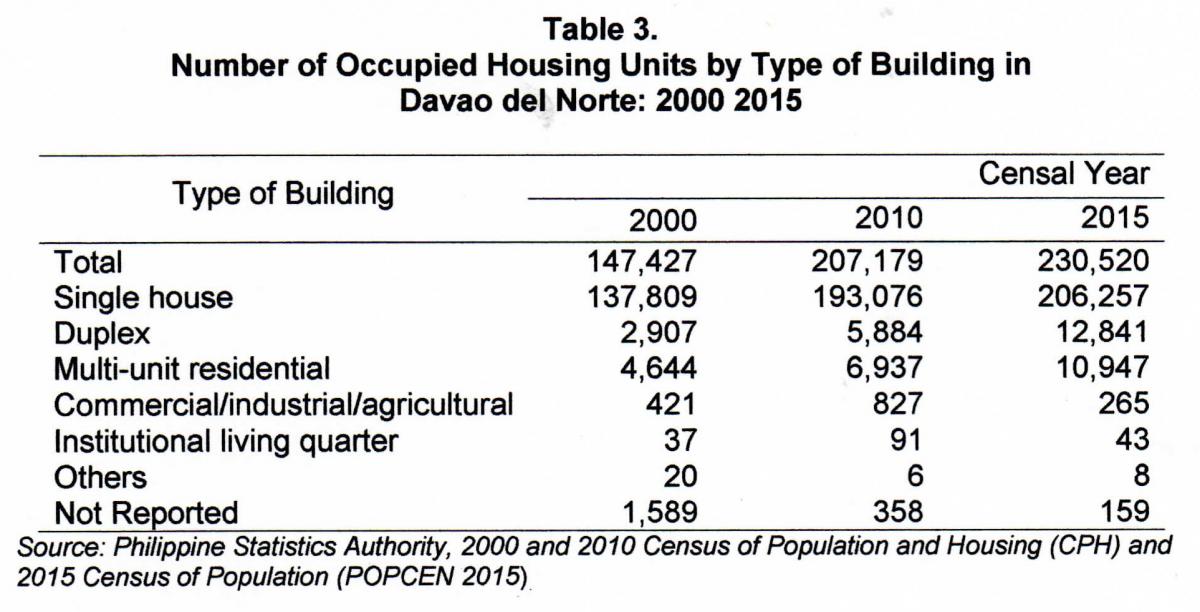
One in three houses had walls made of concrete, brick or stone
In 2015, 35.0 percent of the occupied housing units in the province had outer walls made of concrete/brick/stone, higher than the 31.4 percent recorded in 2010 and 20.9 percent in 2000. Outer walls made of bamboo/Sawali/cogon/nipa comprised 23.9 percent, while 23.0 percent used wood .
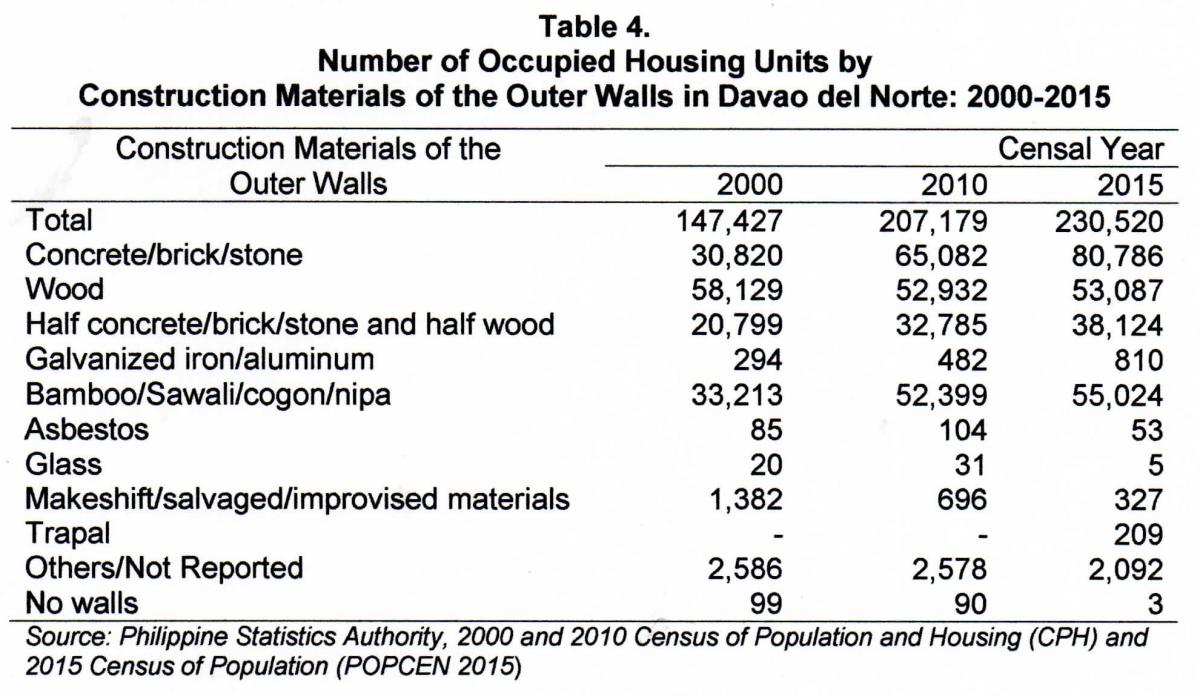
85.4 percent of the housing units had roofs made of galvanized iron/aluminum
Almost nine in ten occupied housing units in the province had roofs made of galvanized iron or aluminum. This figure increased by 3.3 percentage points from
81.2 percent recorded in 2010. On the other hand, the proportion of occupied housing units that used bamboo/cogon/nipa/anahaw for the roofs declined from 10.1 percent in 2010 from 11.7 percent in 2000.

Majority of the households lived in house and lot that they owned
Of the total 233,232 households in 2015, majority ( or 56.2 percent) owned or were owner like of the house and lots they occupied. Also, 19.2 percent of the households occupied house they owned with lot that were rent-free but with consent of the owner, while 9.3 percent occupied house and lot which were rent-free with consent of the owner.

85 in every 100 households used electricity for lighting
In 2015, electricity was the main fuel used by the households for lighting which accounted to 84.9 percent. The number of households using kerosene (gaas) and solar lamps accounted for about 10.9 percent and 2.2 percent , respectively. There were 58 households which reported no fuel used for lighting.
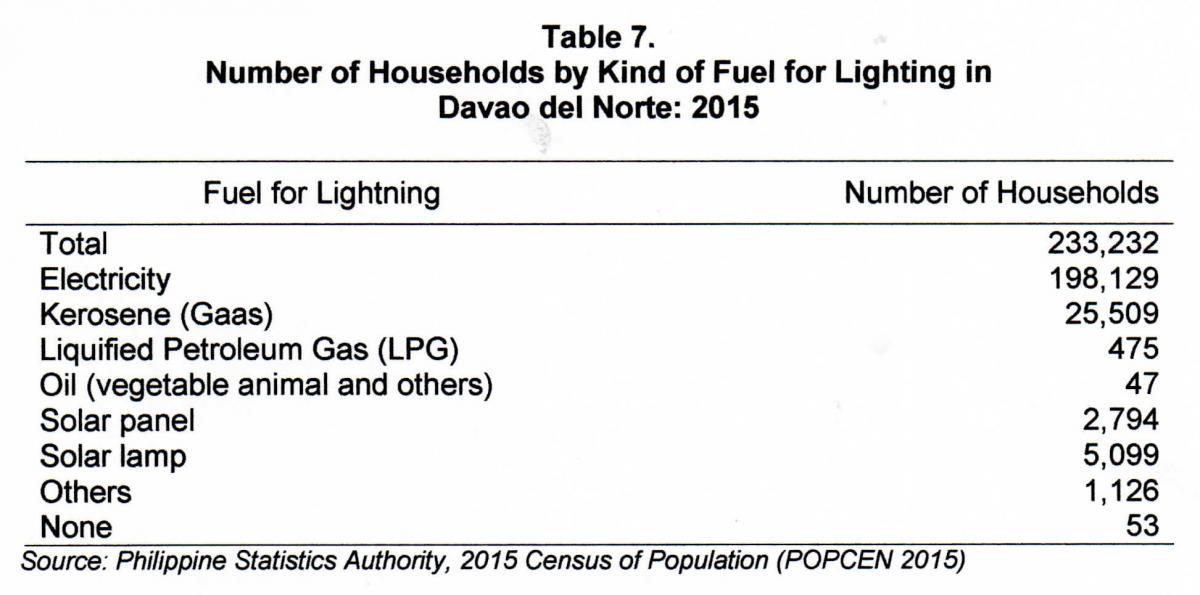
Peddler was the most common source of water for drinking
About 25 percent of households obtained water for drinking from peddlers, while 23.3 were from bottled water . While 16.0 percent drew water for drinking from community water system (own use faucet), followed by shared tubed/piped deep well with 9.7 percent. Moreover, the proportion of the households that drew water from lake, river, rain and unprotected spring was 4.4 percent.
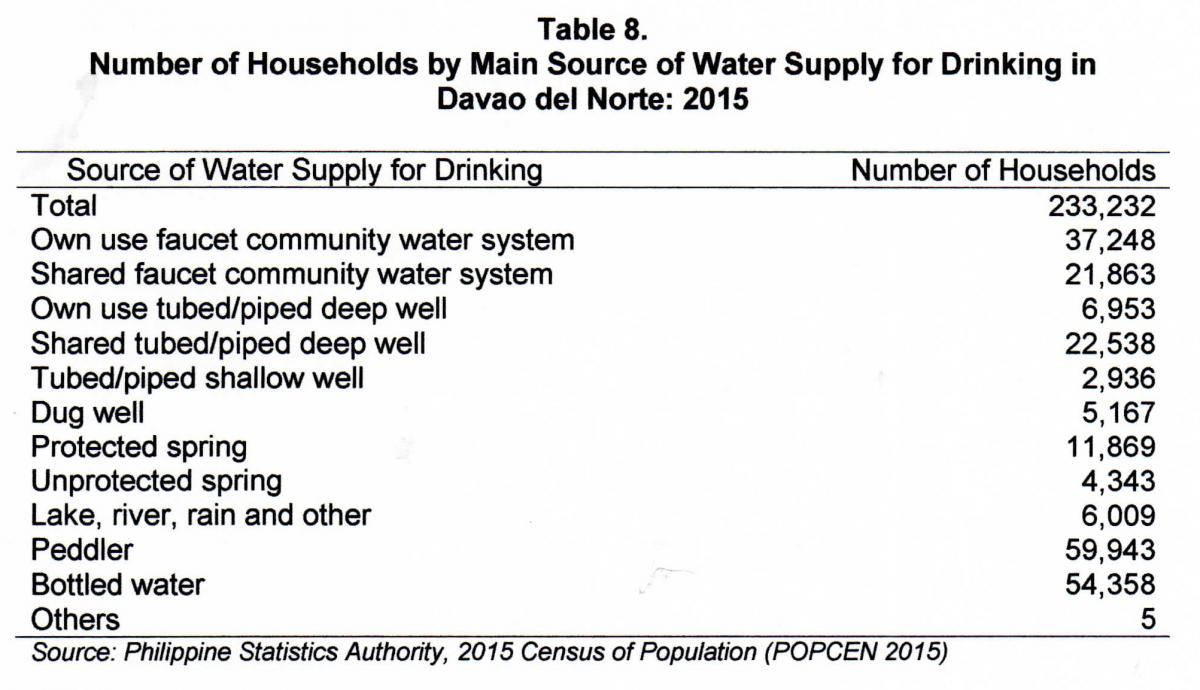
One in every three households used water from own use faucet for cooking
About 33.8 percent of the total number of households in 2015 used water from community water system (from own use faucet) for cooking. This was followed by households that used water from shared tubed/piped deep well and from peddler with 13.0 and 12.5 percent, respectively.
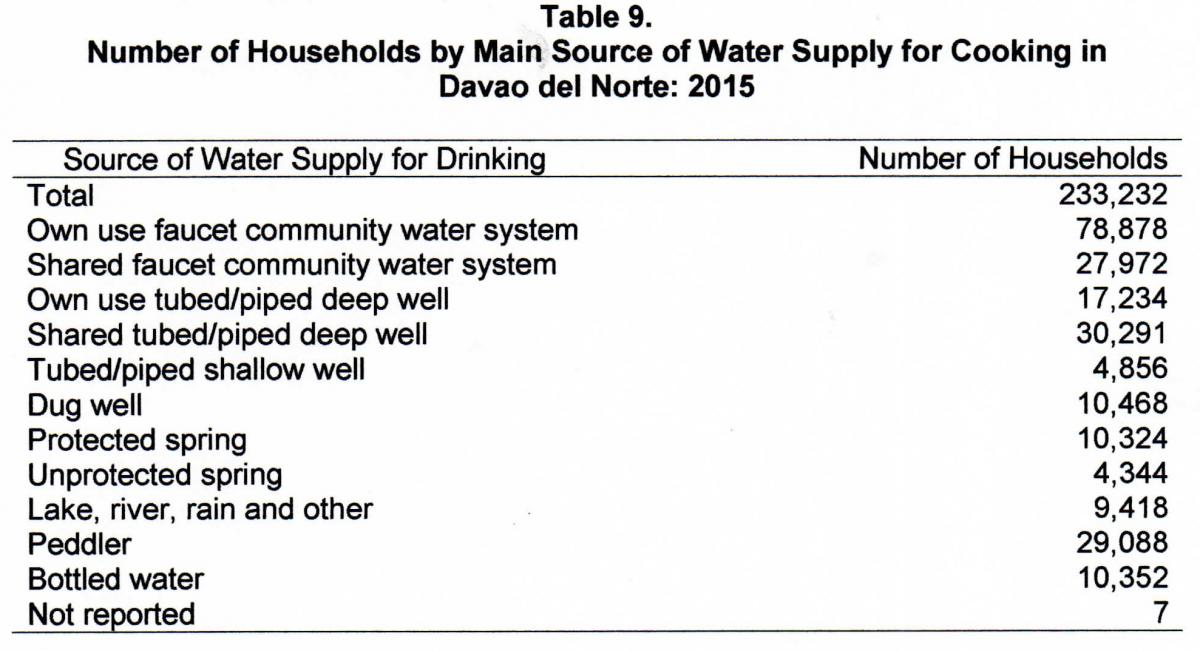
Technical Notes:
1 The Municipality of San Isidro was created on June 26, 2004, after the ratification of Republic Act 9265. It was formed out of 6 barangays of Asuncion and 7 barangays of Kapalong.
2 Asbestos included
Household is defined as "one person or a group of people who have the accommodation as their only or main residence and for a group, either share at least one meal a day or share the living accommodation, that is, a living room or sitting room".
Housing unit is a structure or the part of a structure or the space that is used as a home, residence, or sleeping place by one person or more people who maintain a common household.
Occupied housing unit is a housing unit that is occupied by a household.
PEPITO D. AMOYEN
Chief Statistical Specialist
PSA-Davao del Norte
